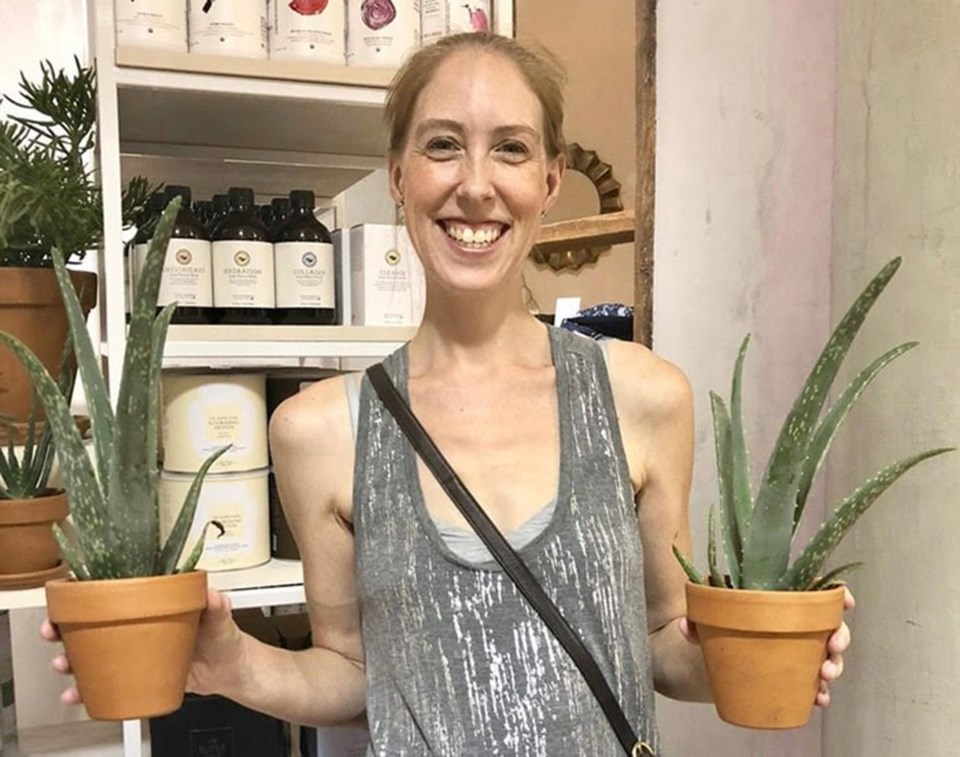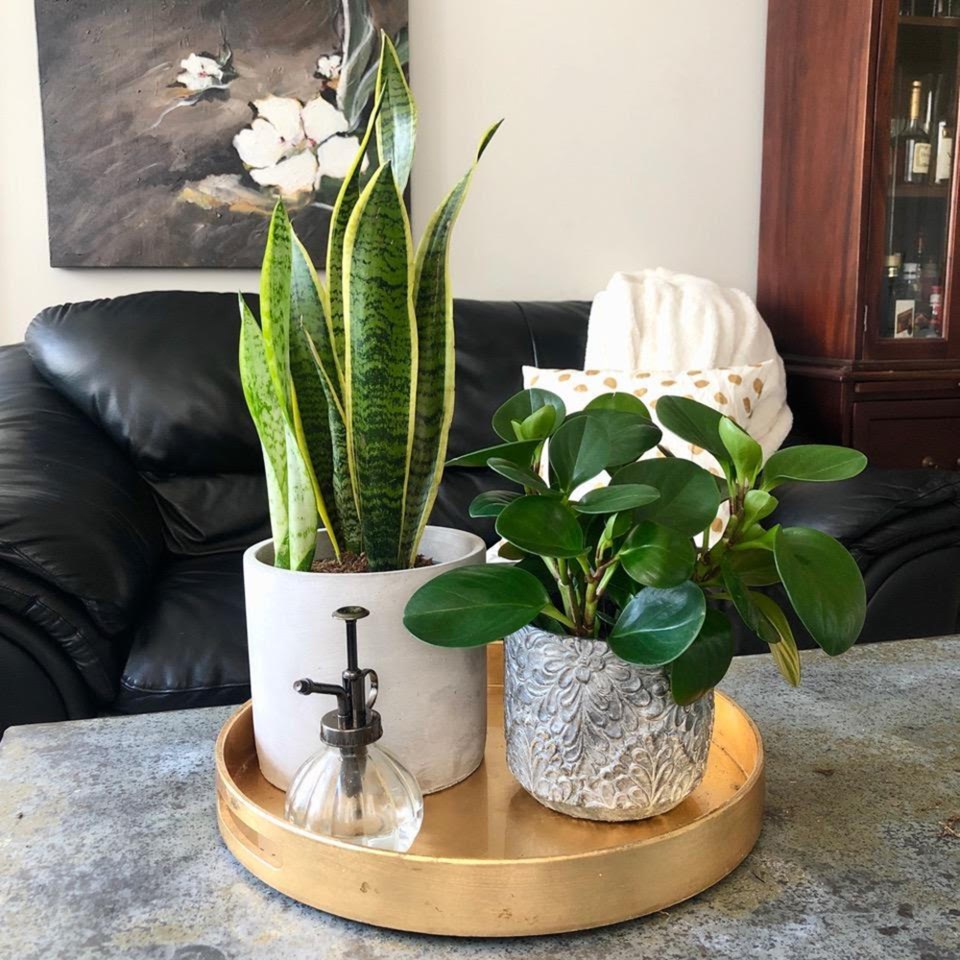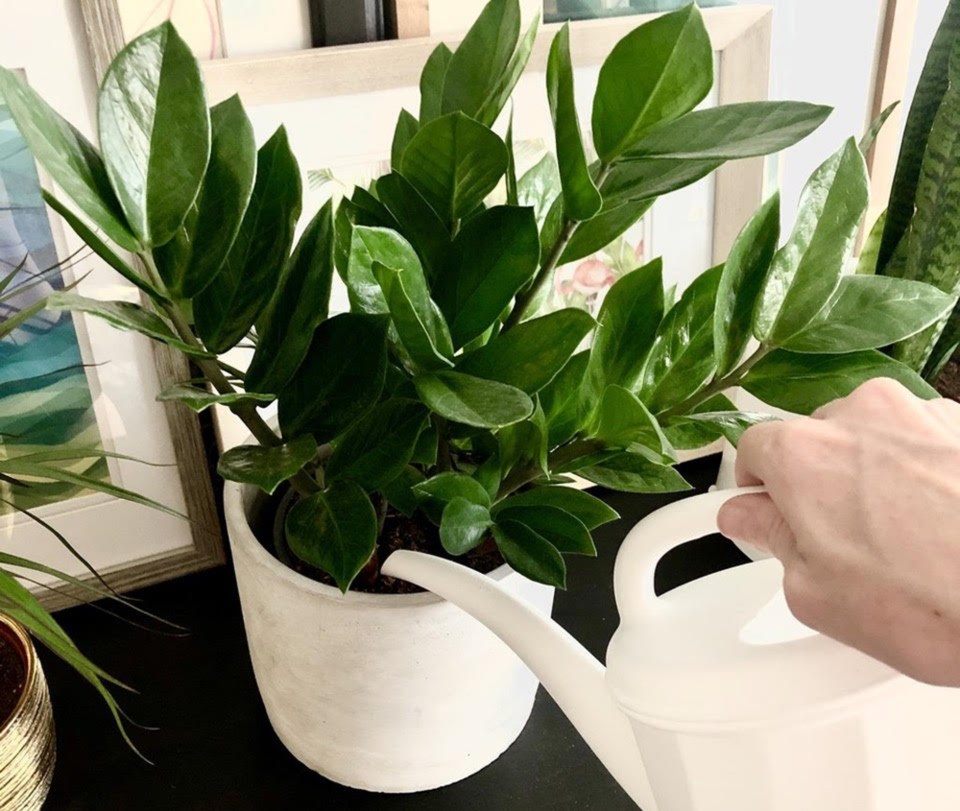It can be tough to keep houseplants thriving at the best of times, but in winter it’s event harder—the days get shorter, colder and darker.
Fear not, we have the antidote to help you keep your houseplants alive and well.
We spoke to our resident plant superhero, Sarah Shore—A.K.A Aloe Gal—to find out the best ways to keep houseplants lush and green during these chillier months.
The Vancouverite is the creator behind the Aloe Gal online plant store, which ships easy to care for plants in modern planters across B.C. and the rest of Canada. Shore, who once labelled herself a “plant killer,” stumbled into the world of easy to care for plants and hasn’t looked back. Now, her newfound passion is helping to give people the realization and confidence that they can too take care of plants.
 Sarah Shore, A.K.A Aloe Gal, loves teaching people how to care for plants. Photo: Supplied by Sarah Shore.
Sarah Shore, A.K.A Aloe Gal, loves teaching people how to care for plants. Photo: Supplied by Sarah Shore.Shore gave Vancouver Is Awesome five tips to stick to this winter to ensure your green babies continue to flourish.
She said many plants went dormant in winter and that meant it was “time to make a few adjustments in your plant care.”
1. Scale back the watering
“With the lack of light during the winter and the colder temperatures plants don't need to be watered as often; they are not taking in as much water as they do in those hot summer degrees,” Shore said.
“Before you reach for the watering can, stick your finger in the soil a couple inches down to make sure it's dry. If not, give it a little more time.”
Shore said if the plant gets watered excessively it can lead to root rot which is a really good way to kill your plant.
“At the very least, it ends up being a lot of work to try and save it,” she said.
Shore said at this time of year, low maintenance plants like the Snake Plant, Aloes and Cacti only need to be watered every four weeks or so.
“If normally you water a plant once a week, you might need to cut down your watering frequency to twice a month instead,” she said.
“Of course, make sure to take into consideration your specific plant when it comes to watering as each one has their own watering needs.”
Shore said when watering, you should always use room temperature water.
“This actually goes for watering all year round. You don't want to shock your plants with cold water,” she said.
“Trust me, they won't be very happy about that.”
2. Move your plants
As the weather gets colder and the days are darker, Shore points out that you should assess the temperatures and light that your plants are getting and move them if necessary.
“If you have plants that are now in the way of a draft, such as from your windows or front door, adjust them so they are not feeling the icy air,” Shore said.
With that said, keep your bright sun loving plants as close to the source of light as possible.
“If you find that your plants are starting to lean towards the light, that's a good signal to rotate your plants so that all sides get the light they need,” Shore said.
“You can rotate them every few days to keep your plant straight.”
If your space is especially dark, Shore said you may want to consider adding some artificial light with one of your lamps or getting an actual grow light for your plants.
“On the other side of the cold temperatures coming from the outdoors, you've also got hot dry air from the heaters indoors,” she said. “You want to make sure that none of your plants are in the way of the hot air coming from your heaters.”
Shore said at this time of year it's only natural to turn on the heat but it's not ideal for your plants.
“The heat can drop the humidity and it can dehydrate them,” she said.
Which leads us to #3...
 Sarah Shore, A.K.A Aloe Gal, loves teaching people how to care for plants. Photo: Sarah Shore.
Sarah Shore, A.K.A Aloe Gal, loves teaching people how to care for plants. Photo: Sarah Shore.3. Increase the humidity
Shore said as the temperature increases indoors during the winter, the humidity level typically drops so it's important to give your plants the humidity they need.
“One of the best ways to do this is to have a humidifier running around your plants,” Shore said.
“If you are not planning on getting a humidifier there are other ways to achieve some extra humidity for your plants. If you group your plants together they will create their own humid environment. To make it even better you can use a pebble tray. As the water evaporates from the pebble tray it creates a humid environment for the plants.”
4. Forget about fertilizing or re-potting until the Spring
“House Plants tend to go dormant in the winter so they are not growing much, which means that they don't need those extra nutrients provided by fertilizer right now,” Shore said.
“Now is also not the time to worry about re-potting your plant. They are not growing and don't need the extra space.
“If you move them into to a pot that is too big for them (because they won't be growing into it for the next few months), you can actually end up overwatering and eventually killing them.”
Shore said another reason not to re-pot during this time is that if their roots get damaged during re-potting it's much more difficult for them to recover.
5. Give them a clean and trim
Shore said this time of year is also a great time to actually give your plants a little attention.
“If you haven't done so in a while, this is a great time to give them a clean,” She said.
“Wipe them down, give them a spray and get rid of any dust and dirt build up. Plants need every bit of light they can get at this time year and the build up can prevent them from soaking up the light they needs.
“Now is also a good time to remove any dead leaves that might be lingering and trim them if needed so that when growing season starts again your plants are ready to grow!”
For more information on how to care for plants and to see what’s available check out the website Aloe Gal.
Find her original blog piece on winter here.

